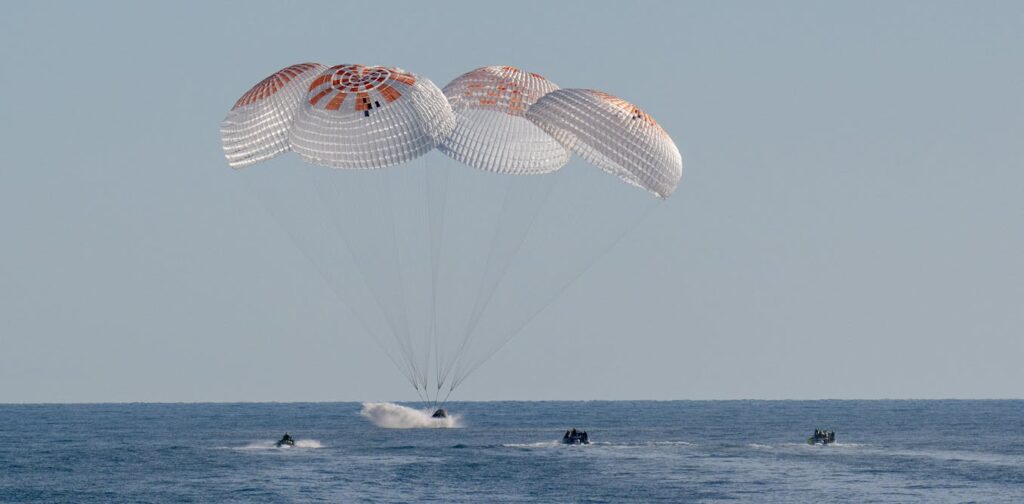
When discussing the effects of spaceflight on human health, most people focus on the dangers of radiation, bone density loss, and changes in eyesight. While these long-term risks are significant, a less frequently discussed concern is motion sickness, which can affect astronauts during their return to Earth.
The issue of motion sickness in space is not new, but it has gained renewed attention as researchers explore innovative solutions. A team of aerospace engineers is investigating the use of virtual reality headsets to help astronauts stay sharp and focused during their splashdown back to Earth.
Understanding Motion Sickness in Space
Motion sickness occurs when there is a conflict between the sensory information received by the brain and what it expects based on past experiences. This is particularly relevant for astronauts who have grown up on Earth, where their brains are accustomed to the presence of gravity.
In the microgravity environment of space, the vestibular system, which helps the body understand movement, does not have gravitational input. This conflict can lead to space motion sickness, affecting over half of all astronauts when they first reach orbit. The condition can also persist upon their return to Earth, known as terrestrial readaptation motion sickness.
Challenges During Splashdown
When astronauts return to Earth, they often land in water, which can exacerbate motion sickness due to the choppy waves. This can be particularly problematic if astronauts need to evacuate the capsule quickly in an emergency, as motion sickness can delay response times and impede evacuation efforts.
Currently, astronauts rely on medication to manage motion sickness, but these drugs can cause side effects such as drowsiness and may lose efficacy over time. This has led researchers to explore non-pharmaceutical interventions.
Virtual Reality: A Potential Solution
The research team conducted experiments to determine if manipulating visual information could mitigate motion sickness without relying on drugs. Participants were exposed to motions simulating transitions between gravity environments and ocean-like waves. During these experiments, the team tested the effectiveness of a “virtual window” using virtual reality headsets.
In the control group, participants received no visual cues of motion, similar to reading in the backseat of a car. Meanwhile, one group experienced a visual scene that moved naturally with their motion, akin to looking out the side window of a car. Another group saw a scene that included an overlay showing future motion, similar to looking out the front window and anticipating the road ahead.
Two-thirds of participants without visual cues experienced severe nausea, while only one-fifth of those with side window views and one-tenth with front window views had to stop early.
Implications for Astronauts and Beyond
The results suggest that by tracking the motion of the capsule and projecting it onto a headset, astronauts’ motion sickness could be reduced by roughly half. This approach could improve their ability to respond quickly in emergencies. Furthermore, if future motion could be predicted and displayed, the effectiveness of this intervention could be enhanced even more.
This research highlights the potential of virtual reality as an effective tool for managing motion sickness in astronauts, offering a solution that avoids the drawbacks of pharmaceuticals. Beyond space travel, these findings could benefit individuals prone to motion sickness in everyday scenarios, such as on planes, trains, and buses, where looking out a front window is not always possible.
Looking Forward
The development of virtual reality interventions for motion sickness represents a significant step forward in ensuring the safety and efficiency of astronauts during their missions. As space travel becomes more frequent and accessible, such innovations will be crucial in maintaining the health and performance of those venturing beyond our planet.
As research continues, the potential applications of virtual reality in mitigating motion sickness could expand, offering relief to many who suffer from this condition, both in space and on Earth.





